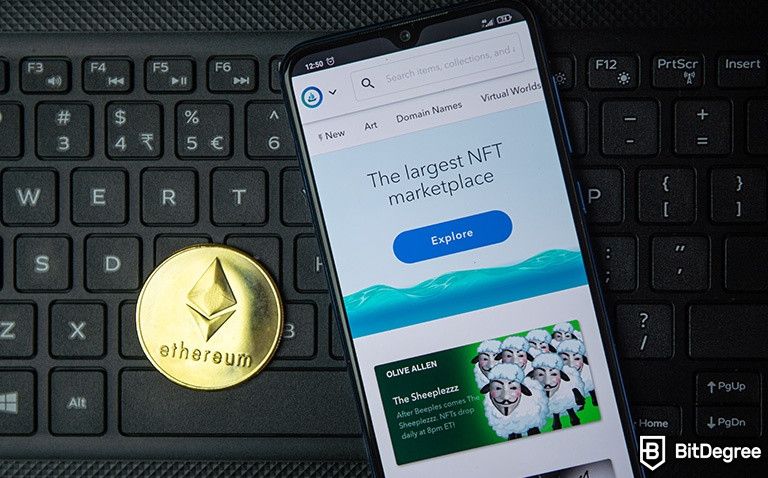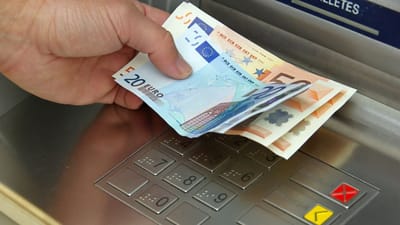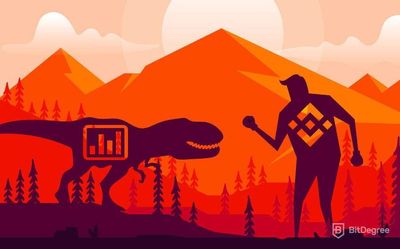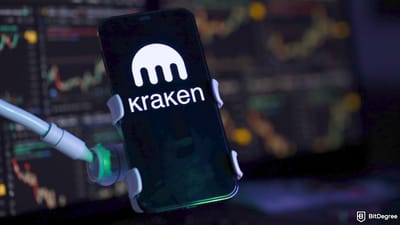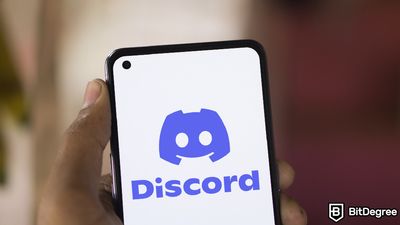Stop overpaying - start transferring money with Ogvio. Sign up, invite friends & grab Rewards now! 🎁
If you were to take a single look at the crypto world this past year, you’d likely notice that NFTs are at the top of the popularity charts. In the same manner how Bitcoin used to be the focus of attention, now, everyone’s talking about non-fungible tokens! That being said, though - what is an NFT, and how is it important, in the first place?
Currently, the internet is full of misinformation. Some crypto experts claim NFTs to be digital collectibles, while others talk about the utility aspect of these tokens. Sorting the right from the wrong can be a challenge, especially if this is your first time hearing about NFTs, in general!
Worry not, though, since this is where I come in. Today, I’ll tell you what does NFT stand for, what is NFT art, and we’ll also talk about all of the other different use cases for this phenomenon.

Did you know?
Subscribe - We publish new crypto explainer videos every week!
How Do KYC & AML Work in Crypto? (Explained)


Table of Contents
- 1. What is an NFT?
- 2. What’s All the Hype About?
- 3. One NFT, Two Uses?
- 3.1. Crypto Art - More Than Meets the Eye
- 3.2. Tangible Use Cases for NFTs
- 4. Buying, Selling, Storing, and Creating NFTs
- 4.1. Creating an NFT - Simpler Than You’d Think!
- 4.2. NFTs and Energy Consumption - An Intricate Issue
- 4.3. How to Buy / Store an NFT?
- 4.4. How to Sell / Trade an NFT?
- 5. NFTs - The Revolution of Asset Ownership, or a Big Bubble?
- 5.1. On the Other Hand…
- 6. What is an NFT: A Quick Recap
- 7. Conclusions
What is an NFT?
Let's get straight to the point - what is an NFT?
Latest Deal Active Right Now:Well, I'll present you with the watered-down description, first, and then we'll be able to get into some more detail.
| NFTs - non-fungible tokens - are cryptocurrency-related assets that are completely unique in their nature. They can be anything from digital artwork, all the way to a song from Deadmau5 or a homemade video of a cat falling off the table. Once any of the aforementioned assets (rather, their metadata) is uploaded onto the blockchain, they become NFTs. |
Now, in order to discuss what is NFT, the very first thing that we need to get out of the way is the term “non-fungibility”.
While it may sound difficult, it’s actually pretty simple to understand. Non-fungibility is a fancy way of saying “uniqueness”. The term NFTs itself stands for “non-fungible tokens”. This uniqueness relates to the one-of-a-kind properties assumed by each individual NFT.
Think about it this way: fiat money like the United States dollar is fungible. Meaning, each different $1 can usually be replaced with another $1, in a 1:1 ratio. This, however, isn’t the case with NFTs.
Same as any other crypto assets, NFTs possess their own metadata, and can be distinguished by it on the respective blockchain. Unlike other digital assets, though, there are no “1:1” replacements for an NFT - the token is completely unique, and one-of-a-kind.
Note: A "token", in this context, is simply a digital asset.
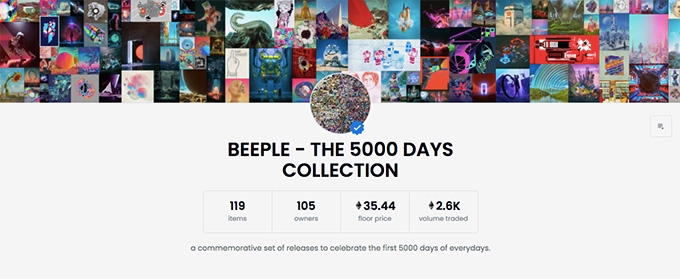
This is actually one of the main reasons for the values attributed to some non-fungible tokens. If you’re looking to find out what is an NFT since you saw Beeple’s NFT art being sold for $69 million, chances are that you know what I’m talking about. Unlike with cryptocurrencies such as Bitcoin, being completely unique and one-of-a-kind, an NFT crypto is also scarce, and this scarcity comes with a certain price tag.
Now, obviously, there are other reasons for the values attributed to some NFTs out there, but I think the former point illustrates the idea perfectly.
I assume that some readers of this article might say - how are coins like Bitcoin not unique?! All transactions are public, and each coin can be traced back, in the same manner how each transaction can be observed by anyone and everyone!
Yes, you are correct. However, I’d urge you to, once again, think about the United States dollar.
Each dollar has a serial number - this is equivalent to the metadata of each crypto coin on the blockchain. That being said, you will always be able to exchange a single dollar for another dollar - they are fungible! Figuring out what is an NFT, you should understand that the opposite is the case with these tokens - there are no equivalents out there.
What’s All the Hype About?
NFT’s are popular - that’s quite evident. All you need to do is take a look at some of the more-recent Twitter trends, or even check out your local news.
What is this hype all about, though? Learning what is an NFT doesn’t really explain why you should be interested in the topic, in the first place.
To put it very bluntly, non-fungible tokens allow you to become the provable owner of a certain digital asset. Once you purchase an NFT, everyone will see that the X NFT belongs to the Y wallet - it's set in stone. Also, as mentioned earlier, unlike fungible assets, NFTs are scarce - this scarcity creates a natural demand.
This is also why some NFTs are so expensive, as well - it's all a question of supply & demand.

That being said, though, why do people purchase rare artwork? Why are many individuals interested in Blue-Chip NFTs - ones that possess a high value? Or, on a more-common note - why would you buy a skin for your League of Legends character, or your weapon in CS:GO?
Fun fact: Did you know that "fractionalization" is a method to break down high-value NFTs into smaller, more affordable pieces?
The answer is truly subjective. Some people enjoy the visual aesthetics of their assets. Others love knowing that they possess something that is rare and valuable. Furthermore, many people like to purchase certain assets as investments, with the idea to later flip them (buy them for a low price, sell for higher), and make a profit whilst doing so.
The exact same rules apply to NFTs, as well. Them being digital assets doesn’t really alter or influence these reasons in any way, shape, or form. So, with gaming NFTs, it can often be boiled down to two things: true ownership of in-game items, and the potential monetary value that one would receive from them.
Note that one area where all of that doesn't really apply would be the so-called "Soulbound Tokens". These are assets that have no intrinsic value, and cannot be transferred to others. These have other, specific use cases.
One NFT, Two Uses?
Probably one of the most-notable points of “what is NFT” discussions is the fact that most people associated NFTs with digital art, and nothing else.
It is true that the main use case for these tokens (as of writing this article) is just that - NFT art. That being the case, though, you should know - it’s not the only one!
In fact, there’s a huge variety of different use cases for NFTs. And I’m not talking about things such as them acting as collectibles - instead, I’m referring to actual, tangible value.
Truth be told, NFTs can be used for a wide variety of purposes. While they are most often categorized as digital art and utility tokens, the list can get a lot more detailed than that. NFTs can be:
- Digital art (.png, .jpeg, .gif, and any other internet-supported format);
- Game assets (in-game items that can be sold to or traded with other players - think Axie Infinity);
- Tickets to different events;
- Identity preservation units;
- DeFi lending collateral;
- Tokens of some performed service;
- Representations of real estate, documents, or any other physical item.
Let’s not get ahead of ourselves, though. Taking it from the top, let’s discuss the most well-known usage of these unique crypto assets - digital collectible artwork.
Crypto Art - More Than Meets the Eye
As mentioned earlier in this article on what is an NFT, undoubtedly the most popular use case for these tokens is artwork. Let’s explore this concept a bit further.
If you google “NFT crypto”, chances are that your search results are going to be bombarded with different images of digital artwork. Truth be told, you don’t even need to search for NFT art, or try to find out what is NFT art, specifically - the non-fungible token culture is naturally associated with these types of artwork.
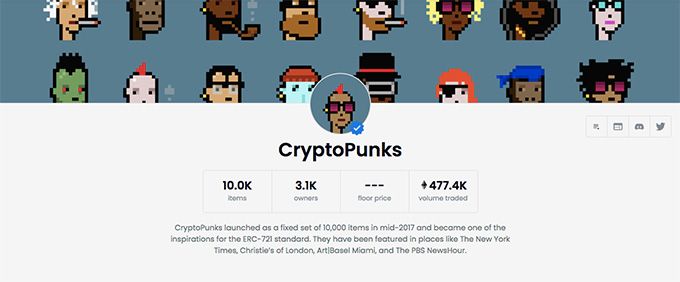
The pieces of art can come in all possible shapes and sizes - seriously. On one hand, you have intricate digital worlds, 3D imagery, and paintings that appear like they belong in a museum. On the flip side, you could just take a photo of your dog, and make an NFT out of it, too.
The concept of NFT art is closely related to the topic of collectibles. Most NFTs that are artwork come as collectible units - some are unique pieces of art, while others can be a set of similar characters (think: CryptoPunks), unique internet culture aspects (such as Jack Dorsey’s first tweet), or even famous moments caught on camera, and crafted into an NFT-GIF (LeBron James dunking the ball during a basketball game).
Fun fact: The first-ever NFT was created in 2014!
The former example can be compared to opening a booster pack of your favorite card game. However, instead of physical cards, you’ll receive digital ones, and instead of an actual game, you get to possess digital artwork, in the form of collectibles (although, NFT games are super-popular, as well).
While all of this is fine and dandy, more often than not, the core aspect of what is NFT is being missed, as far as artwork goes. Everyone’s talking about the “irrational” prices of some NFT crypto art pieces, but no one wants to mention how NFT revolutionized the professional landscape for the artists themselves.

The NFT market has allowed artists to go completely independent, and detach themselves from different profit-sharing platforms. Instead, an artist can now host their work on an NFT marketplace (more on those later), and take care of all of the marketing themselves.
Evidently, this is thanks to the combination of a particular public interest in the art side of NFTs, and blockchain technology itself. Still, though, it’s a point that should be emphasized more often!
Tangible Use Cases for NFTs
While you could say that you now know what is an NFT, that statement wouldn’t be factually correct due to its one-sidedness. Because, while NFT art might be the most popular topic that’s discussed in all of the different media outlets out there, there are actually many more use cases for the tokens, too.
Instead of trying to simplify some complicated jargon, allow me to illustrate what I mean with a straightforward example:
Imagine that one of your favorite musicians - say, The Weeknd - is organizing a concert in your city. As per usual, you could just purchase a conventional ticket, and go to the concert. However, you notice that there are alternative tickets available - more-specifically, NFT ones.
For the sake of this example, let’s just say that The Weeknd decided to release an NFT collectible set - 1000 pieces of custom-made NFT artwork, accompanied by their music tracks from a new album. Anyone who purchases this album unlocks a hidden perk - three free tickets to any of The Weeknd’s concerts in the US.

Now, all that you need to do is have your proof of NFT ownership ready with you as you stand near the doors of the arena, and you’re set!
The above-given example is super-simple, sure, but it does the job to illustrate just how well NFTs can be used, in a tangible way. You don’t only receive a limited digital collectible, but also unlock additional perks.
Truth be told, this can extend to various meet-and-greets, VIP access to certain events, locked digital content (early access to movies, special videos from your favorite YouTube content creators), and much more.
Admittedly, as of writing this “What is NFT?” article, this area of the crypto phenomenon is still unexplored, and is only practiced by a set few content creators (funnily enough, The Weeknd does actually have an NFT release like that). There are multiple theories for why this might be the case, the most plausible of which is that the NFT market is still in the early stages of its development.
Buying, Selling, Storing, and Creating NFTs
By now, it should be pretty clear - what is an NFT, what are the different types of NFTs out there, how the tangible-use NFTs differ from purely-art-based ones, and so on.
Now, though, since we have the basics out of the way, and given the fact that you are now a bit more knowledgeable about the different aspects of NFTs, we should also cover the technical parts of the topic, too - everything from their creation, all the way to buying and trading.
One thing to point out is that this isn’t a “how-to” article. Meaning, we won’t be going too in-depth when it comes to the processes described above. Instead, though, I’ll tell you all about them in a theoretical fashion, and will also give you some tips, too.
Creating an NFT - Simpler Than You’d Think!
What is an NFT creation process, and what does it look like?
Well, believe it or not, creating an NFT is actually pretty simple! While all of the jargon surrounding it may make it look really confusing and complex, I promise you - anyone who understands the basics of how crypto works should be able to create their own non-fungible tokens in a few minutes.
The very first thing that you need to do is find an NFT marketplace. Two of the largest examples are OpenSea, and Rarible. Both are dedicated to Ethereum-based NFTs (ERC-721 token standard).
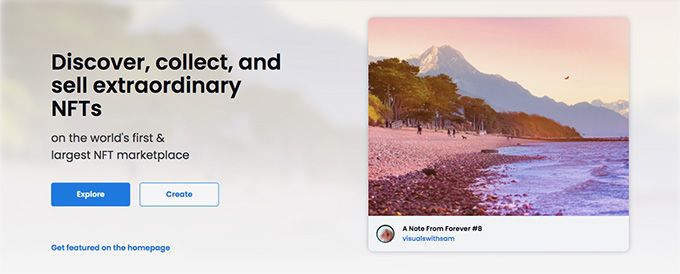
You could create NFTs in a different manner, as well, but granted that you’d just learned what is an NFT, in the first place, keeping things simple is probably the best way to go about it. At the same time, NFT creation on platforms such as OpenSea is actually the preferred way to go about it, too!
Once you’ve chosen a platform, you will then need to connect your cryptocurrency wallet to it. This wallet is where you will be keeping your NFTs in, and also the place that you'll store your Ether, in order to transact on the NFT marketplace of your choice. There are NFT-compatible wallets out there that are better than others - an industry-leading example would be the Ledger Nano X, a hardware crypto wallet.
While it may seem dangerous to connect your wallet to a third-party platform, the process should be completely secure - this further-emphasized by the marketplaces themselves. Naturally, though, security is exactly the reason why you should only use reliable and established marketplaces, such as the ones mentioned above.
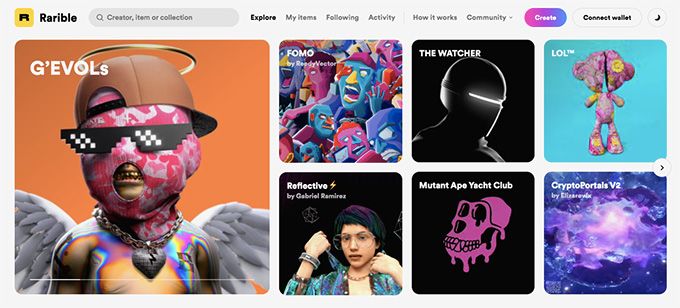
With platforms such as OpenSea, there will be a wizard guiding you through the creation process. This process is actually really quick, assuming that you have your NFT (photograph, 3D file, GIF, etc.) already prepared.
Now, the only point that you might want to consider are the gas fees. These are fees that you need to pay in order to perform a transaction on Ethereum. If, after learning what is NFT, you’re creating an ETH-based token, you should try and aim for a period of time during which the gas fees are at the lowest. You can use this tool to check it. You can choose to pay higher gas fees, if you'd like - this would work to provide priority for the purchase / mint.
If the fees aren’t an issue for you, then the creation process is very straightforward, from there on out. You set your auction prices, choose whether or not it’ll be a private sale, adjust a few other metrics, and that’s it - all that’s left to do is to market your work! Don't forget to "reveal" your NFTs - in other words, unveil the images & traits, when the time comes!
NFTs and Energy Consumption - An Intricate Issue
Before you go out and create your own NFTs, you should understand the energy consumption issue that is often brought up as one of the bigger criticisms of the tokens.
Multiple artists who’ve decided to issue and sell their artwork in the form of NFTs have been criticized by environmentalists for doing so. It would appear that creating and selling even a single NFT requires unprecedented amounts of energy. Following this, the space is considered to be wasteful.
If you’re not sure about just how big of an issue this is, all it takes is a look at Tesla and Elon Musk’s scandal concerning accepting BTC as a payment option for their cars.
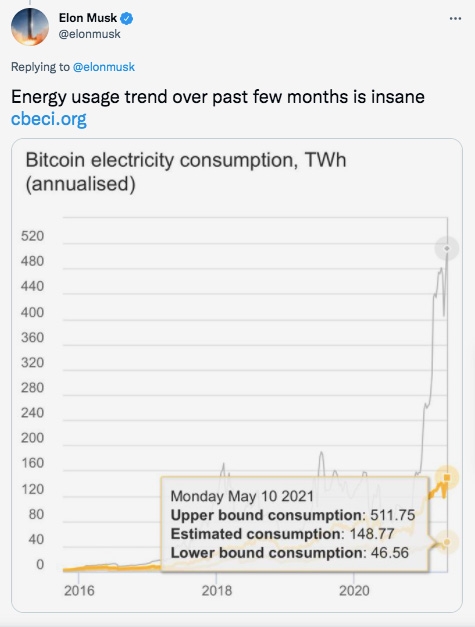
As it relates to NFTs, however, this issue is misplaced. Meaning, it’s not the fault of non-fungible tokens - the energy waste happens during their minting process, and has to do with the miners of Ethereum, combined with the popularity and use of this particular blockchain.
This is an issue that is hopefully going to be mitigated by the Ethereum 2.0 update, though.

Did you know?
Subscribe - We publish new crypto explainer videos every week!
What is a Crypto Mining Pool? Is it Worth it? (Beginner-Friendly)


How to Buy / Store an NFT?
If you’ve learned what is an NFT, and would like to own one yourself, the best course of action is to - once again - visit one of the more-popular marketplaces, and start your selection process.
Depending on your reason for why you’d want to buy NFT art (potential investment, collectible, or other), most marketplaces will have different sections for you to explore.
Upon finding the NFT crypto that you’d like to acquire, you will then need to connect your wallet in order to make a purchase. Some NFTs can be bought outright, while others will have to be purchased via a timed auction.
Once you purchase the NFT of your choice, it will then be stored on your cryptocurrency wallet, such as the aforementioned Ledger Nano X. Well, rather, its reference will be stored there, in the form of private keys - this is a whole different can of worms to open, so we won’t do it here.

Instead, just note that while you won’t be able to see your NFT on Ledger Live, it’s safe and sound within your wallet. We’ll explore how this works a bit further in the upcoming chapter.
So, that’s it - you are now a proud owner of a non-fungible token! Since it’s public data, everyone will be able to see that you own the NFT - so, it’s not only provable, but also fair and transparent, too!
Well, people won’t be able to know that YOU own the token - only that a wallet with a specific address owns it. Unless you tell (or show) someone that the wallet belongs to you, no one will be the wiser.
How to Sell / Trade an NFT?
If you wanted to learn what are NFTs for investment purposes, this means that you’re probably going to be doing a lot of trading and selling. This process, albeit still pretty simple, will depend a lot on your wallet of choice.
First, let’s assume that you’re using a hardware wallet - we’ll continue on with our earlier Ledger Nano X example.
As pointed out in the previous chapter of this “What is NFT?” article, you won’t be able to see your non-fungible tokens on your Ledger Live user interface. Instead, in order to see (and trade, send, or sell) the NFTs, you will have to connect your wallet to another interface that supports the visual representations of the tokens.
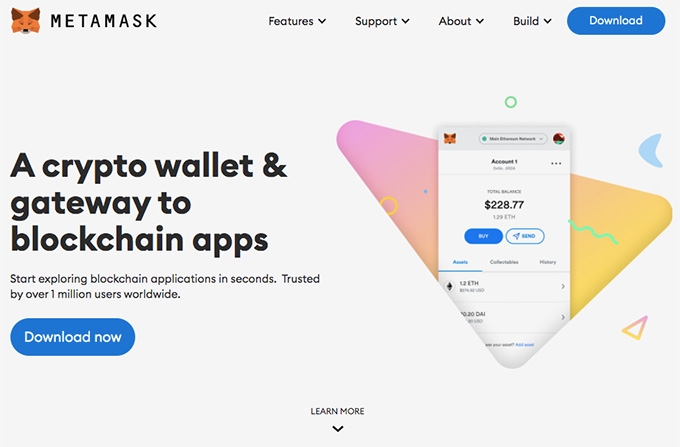
This can include popular software wallets such as MetaMask, or Trust Wallet. With the help of these interfaces, you will then be able to transact with your NFTs. This includes sending them, trading, selling, and doing everything in between.
The process is, once again, straightforward. If you were using one of the software wallets that support NFTs as your go-to choice, in the first place, then you won’t need to connect one wallet with another - it becomes quicker and easier.
The sale itself is a simple process, that would usually look a little something like this:
- You navigate to the marketplace of your choice;
- Connect your wallet;
- Pick the NFT you want to sell from within your wallet;
- List your NFT for sale on the marketplace;
- Approve the transaction, when prompted;
- That's it - you've made your first NFT sale!
See? A very simple and straightforward process! Do keep in mind, though, that if you're facing some unexpected expenses, you don't necessarily need to sell your NFTs - instead, you could lend them out on specific platforms, and unlock liquidity without selling.
For example, say you have an NFT that's valued at 10 ETH - the lending platform allows an LTV (Loan-to-Value) ratio of 60%. So, you would be able to borrow 6 ETH against this NFT!
An interesting concept, but one that requires a separate article, in and of itself.
NFTs - The Revolution of Asset Ownership, or a Big Bubble?
Before I let you go, there’s one more topic that is worth considering, and it’s also part of the answer to the question - what is an NFT?
That topic revolves around the biggest discussion in the NFT community - is it all just pure hype and a bubble that’s eventually going to burst, or are NFTs truly the next step in digital asset ownership and the world of copyrighted material?
As you can probably imagine, this isn’t a question that would be all that simple to answer. It’s quite open-ended, still, and involves a lot of different variables.
Critics pointing out that NFT art is overpriced make a point out of the lack of tangible value that is received with each purchase of the tokens. Admittedly, you do not receive a physical copy of some sort of artwork - instead, you simply own the representation of that art on the blockchain.
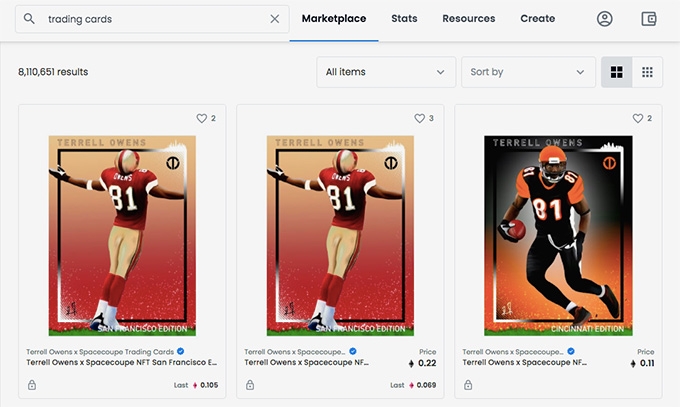
One could make the point that it’s similar to trading card collections, only in the digital form. This is a fair comparison to make - once you figure out what does NFT mean, and what is NFT art, you could draw clear parallels between the two concepts. On top of that, we've already discussed the subjectivity of this earlier in the article.
Art aside, though, the lines get a bit more blurred when you start considering different GIFs and other forms of media as tradeable NFTs. Sure, you can purchase one of Donald Trump’s tweets, but do you actually own the tweet itself? No, you do not - you simply own the visual representation of that tweet, on the blockchain.
Furthermore, there are a lot of copyright-related issues involved in this, as well. As you can imagine, there are plenty of scammers and malicious actors in the space - all of whom have no problems breaching and stealing someone else’s copyrighted content.
While you yourself might be figuring out what are NFTs, the governments of the world are still having a hard time keeping up. A lack of crypto regulation does extend to some confusion in the NFT copyright aspect, as well.

- Secure and reliable
- Accepts fiat currencies
- Lots of trading options
- Reputable exchange
- Accepts fiat currencies
- Offers various trading options

- Huge trading variety
- Regulation-compliant around the globe
- Fair trading fees
- Beginner-friendly
- A wide array of features
- Vast number of different crypto coins & tokens

- Beginner-friendly
- Secure
- Decent trading and withdrawal fees
- Crypto.com Visa Card
- Automated tools & bots
- Ecosystem synergy with CRO
On the Other Hand…
Do you know what does NFT stand for?
No, not the term itself - rather, what’s the actual point of non-fungible tokens?
One word - ownership.
The whole point of NFTs is to empower content creators and owners to be able to transact with other parties, free of any middlemen. This allows you to retain complete ownership of your asset, and transact with it as you will, receiving most of the profits (accounting for gas fees, the cut of the marketplace, and so on).

This, for a fact, extends further than just digital artwork or concert tickets, though. You can basically tokenize anything - real estate, jewelry, cars, manual labor, and so on. The possibilities are truly endless!
As mentioned in the previous chapter, most of the criticisms of the space are aimed at the price tags that are attached to some NFTs. It’s considered to be “the Tulip Mania of our generation”, and many nay-sayers are waiting for the “bubble burst”.
This type of thinking, however, doesn’t account for the tangible benefits that one can receive from non-fungible tokens. The general consensus within the community seems to be that, once the initial hype dies down, people will start turning their sights towards some advanced use cases of these types of tokens.
What is an NFT: A Quick Recap
We’ve discussed many different aspects that surround NFTs, and the space that they operate in. If you’re completely new to the topic, it can get pretty confusing! In order to avoid this, let’s have a quick recap of the main points that we’ve covered in the article.
What does NFT stand for, and what is NFT, in general? NFTs - non-fungible tokens - are unique crypto tokens that represent ownership of a specific asset. These assets can be anything from digital artwork and music, all the way to physical objects and even services, too.
While NFTs are mostly known for their part in popular culture, as collectible artwork, they serve a much broader purpose than that. This purpose, however, is still considered to be unexplored, at least not to its full potential. This is mostly thanks to the ongoing hype that NFTs have found themselves in, be it as rare collectible items (CryptoPunks, CryptoKitties), or as in-game assets, as well.
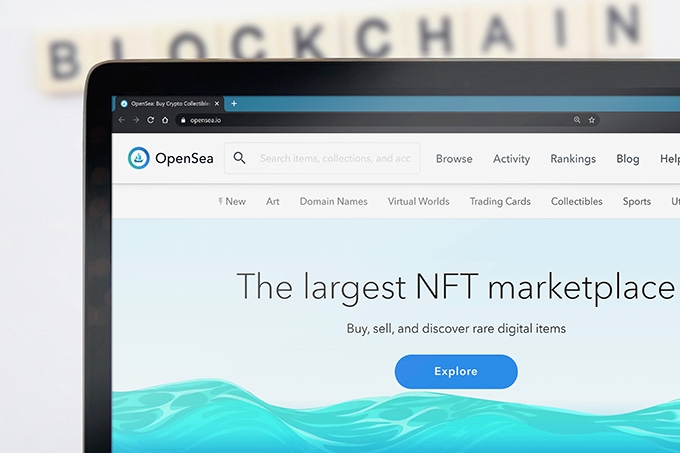
Creating NFTs is actually a much simpler process than you’d think. All that you require is the visual representation of the asset (GIF, photo, drawing, or anything in between), a cryptocurrency wallet, and some basic know-how on what does NFT mean, and how it all works.
Choosing OpenSea or Rarible (or any other major NFT marketplace out there), you will be able to create your own NFTs quickly, and without putting in much effort. The same can be said about buying, trading, or selling them, as well - these processes are simpler than they might initially appear!
Lastly, while there are many critics out there that claim NFTs to be a huge bubble that’s eventually going to burst, and that the price tags attached to some of these tokens are completely unsubstantiated, others believe that this is just the beginning, and the use cases for non-fungible tokens are only going to grow with time.
Conclusions
The world of crypto is truly an unpredictable one. It seems that every single day, there are new and emerging trends peeking out of it - yield farms, DeFi, cross-chain creations, and - of course - NFTs.
While being primarily used as collectible artwork, you shouldn’t discount NFTs as nothing more than that. With time, the utility and tangible use cases of these tokens are only increasing - people are finding new ways of how to use NFTs every single day.
Now that you know what are NFTs, you can start exploring this particular part of the crypto world with some added knowledge. Remember - if you do decide to create a token of your own, your best bet is to use one of the major NFT marketplaces, such as OpenSea or Rarible.
|
|
|
|---|---|
| 14 days | |
| 149 USD | |
| - | |
| Visit site Read review |
Table: Pricing options for the Ledger Nano X hardware wallet
To add to that, make sure to secure your assets in the same manner as you would any other cryptocurrency, too. This does naturally require you to use the best wallets in the industry - Ledger Nano X is a great option, but some hot wallets should do, too.
Thanks for reading, and until next time!
The content published on this website is not aimed to give any kind of financial, investment, trading, or any other form of advice. BitDegree.org does not endorse or suggest you to buy, sell or hold any kind of cryptocurrency. Before making financial investment decisions, do consult your financial advisor.
